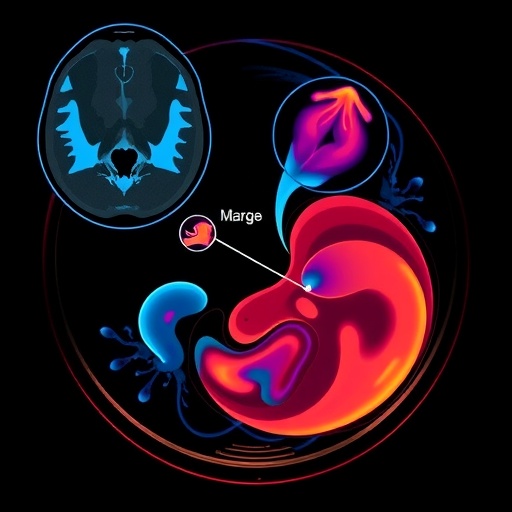In a groundbreaking new study poised to reshape radiation oncology protocols, researchers have conducted a prospective investigation comparing the acute toxicity profiles and objective therapeutic outcomes of two advanced radiation techniques in the treatment of locally advanced head and neck squamous cell carcinoma (HNSCC). The trial scrutinizes the efficacy and side effect spectrum of simultaneous integrated boost (SIB) intensity-modulated radiation therapy (IMRT) versus the more traditional sequential boost IMRT, aiming to precisely calibrate therapy regimens to optimize patient outcomes while minimizing adverse effects.
Head and neck squamous cell carcinoma presents a formidable clinical challenge due to its anatomic complexity and propensity for aggressive local invasion. Radiotherapy remains a cornerstone of curative treatment in these cases, frequently combined with chemotherapy. Intensity-modulated radiation therapy has revolutionized cancer care by enabling highly conformal radiation dose delivery, sparing adjacent critical structures, and thus potentially reducing treatment-related toxicity. Yet, determining the optimal dosing strategy to maximize tumor control and minimize side effects has remained elusive.
The simultaneous integrated boost approach diverges from sequential boost by delivering differential radiation doses to tumor subvolumes within the same treatment session, allowing for an intensified dose to the gross tumor while concurrently treating surrounding tissues at a lower dose. This method promises a reduction in overall treatment time and potentially enhances biological effectiveness through dose intensification. In contrast, the sequential boost method applies a uniform dose to the entire target volume followed by an additional dose boost to the high-risk areas in subsequent sessions. Understanding the comparative benefits of these techniques bears significant implications for patient quality of life and clinical outcomes.
This comprehensive study enrolled a cohort of patients diagnosed with locally advanced HNSCC, systematically randomizing them to receive either SIB or sequential boost IMRT. Patients underwent meticulous pretreatment evaluation, including imaging and histopathologic confirmation, ensuring homogeneity across study arms. The investigators employed rigorous protocols to monitor acute toxicity, evaluating mucositis, xerostomia, dysphagia, and dermatitis using standardized grading criteria throughout therapy.
Remarkably, the study revealed that patients receiving SIB demonstrated a comparable or reduced incidence of acute Grade 3 or higher toxicities compared to those treated with the sequential boost strategy. These findings suggest that the accelerated dosing schedule inherent to SIB does not exacerbate acute adverse effects, challenging previous assumptions regarding dose intensity and side effect magnification. Moreover, the tolerability of SIB radiotherapy translates into fewer treatment interruptions, a critical factor in maintaining the biological effectiveness of radiotherapy.
In addition to toxicity evaluation, the researchers assessed objective tumor response rates utilizing serial imaging and clinical examination during the follow-up period. Intriguingly, the SIB cohort exhibited at least equivalent, if not superior, response rates compared to the sequential boost group. The augmented dose delivery to tumor volumes within the same fractionation schedule likely enhances tumoricidal activity, preventing repopulation and resistance mechanisms from undermining therapeutic efficacy.
The implications of this study stretch far beyond the immediate patient cohort. By demonstrating the feasibility and safety of simultaneous integrated boost IMRT without compromising treatment tolerability or efficacy, this research empowers oncologists to reconsider current radiotherapy paradigms. Streamlined treatment courses with fewer fractions can improve resource utilization and patient convenience, critical advantages in the context of expanding cancer care demands worldwide.
The biological underpinnings of the observed outcomes also invite further exploration. Given the complex interplay of radiobiological factors such as DNA damage repair, tumor hypoxia, and cell cycle kinetics, simultaneous integrated boost may exploit radiosensitivity variations within tumor subregions more effectively than uniform dosing strategies. This precision medicine approach stands to enhance the therapeutic ratio—maximizing tumor control probability while minimizing normal tissue complication probability.
Notably, the study addresses several long-debated questions in head and neck oncology, including the optimization of dose fractionation and scheduling. The finding that SIB can reduce overall treatment time without increasing toxicity aligns with radiobiological principles favoring shortened treatment durations to mitigate tumor cell repopulation during therapy. Such insights may eventually influence guidelines and standards of care across diverse malignancies amenable to IMRT.
The methodology employed by the investigators entails meticulous dosimetric planning to ensure accurate dose delivery within the SIB framework. Advanced imaging tools and treatment planning systems enable the delineation of target volumes at sub-millimeter precision, integrating biological and anatomical data. These technologies drive the successful implementation of SIB, underscoring the significance of multidisciplinary collaboration involving radiation oncologists, medical physicists, radiologists, and other specialists.
From a patient experience perspective, the reduction in treatment time potentially lessens the psychological and logistical burden of prolonged radiotherapy courses. Frequent hospital visits impose significant strain, particularly for patients facing concurrent systemic therapies and comorbidities. Adoption of the SIB protocol might lead to improved adherence, fewer disruptions, and enhanced overall quality of life.
The study’s follow-up period, while focused on acute toxicity and initial response, paves the way for longitudinal analyses regarding long-term toxicities, locoregional control, and survival outcomes. Future investigations will elucidate whether reduced acute toxicities translate into diminished late effects such as fibrosis, xerostomia, or dysphagia—common debilitating sequelae in head and neck cancer survivors.
This landmark research represents a meaningful stride in precision oncology, reinforcing the concept that treatment individualization—tailoring radiation doses to tumor biology and patient-specific factors—can yield superior results. As radiation therapy continues to evolve with integration of molecular imaging, immunotherapy, and adaptive planning, the principles affirmed in this study will underpin iterative advancements.
In conclusion, the prospective comparison of simultaneous integrated boost versus sequential boost IMRT for locally advanced HNSCC underscores the transformative potential of modern radiation techniques. By harmonizing enhanced tumor targeting with an acceptable toxicity profile, SIB emerges as a viable and perhaps preferable option in managing one of the most challenging oncologic entities. The oncology community eagerly anticipates further validation studies and incorporation of these findings into clinical practice guidelines, ultimately improving survival and life quality for countless patients globally.
The pioneering work detailed herein marks a paradigm shift, situating simultaneous integrated boost IMRT at the forefront of therapeutic innovation. Its clinical adoption could reduce healthcare expenditures by shortening treatment courses and mitigating complication-related hospitalizations. Moreover, it exemplifies the indispensable role of prospective clinical trials in refining cancer care strategies, translating radiobiological theory into tangible patient benefit with precision and scientific rigor.
Subject of Research: Prospective comparison of acute toxicity and objective response rate between simultaneous integrated boost and sequential boost intensity-modulated radiation therapy for locally advanced head and neck squamous cell carcinoma.
Article Title: Prospective study comparing acute toxicity and objective response rate between simultaneous integrated boost and sequential boost Intensity-Modulated radiation therapy for locally advanced head and neck squamous cell carcinoma.
Article References:
EL-Atta, S.S.A., Maria, A.M., Abd-Elaziz, L.M. et al. Prospective study comparing acute toxicity and objective response rate between simultaneous integrated boost and sequential boost Intensity-Modulated radiation therapy for locally advanced head and neck squamous cell carcinoma. Med Oncol 42, 553 (2025). https://doi.org/10.1007/s12032-025-03110-8
Image Credits: AI Generated
DOI: https://doi.org/10.1007/s12032-025-03110-8
Tags: acute toxicity profiles in cancer treatmentadvanced head and neck cancer treatmentcomparing radiation techniques in oncologycurative treatment for squamous cell carcinomadose delivery in radiotherapyintensity-modulated radiation therapy advantagesminimizing adverse effects in canceroptimizing radiation therapy protocolsradiation oncology innovationssequential boost intensity-modulated radiation therapysimultaneous integrated boost IMRTtherapeutic outcomes in HNSCC






